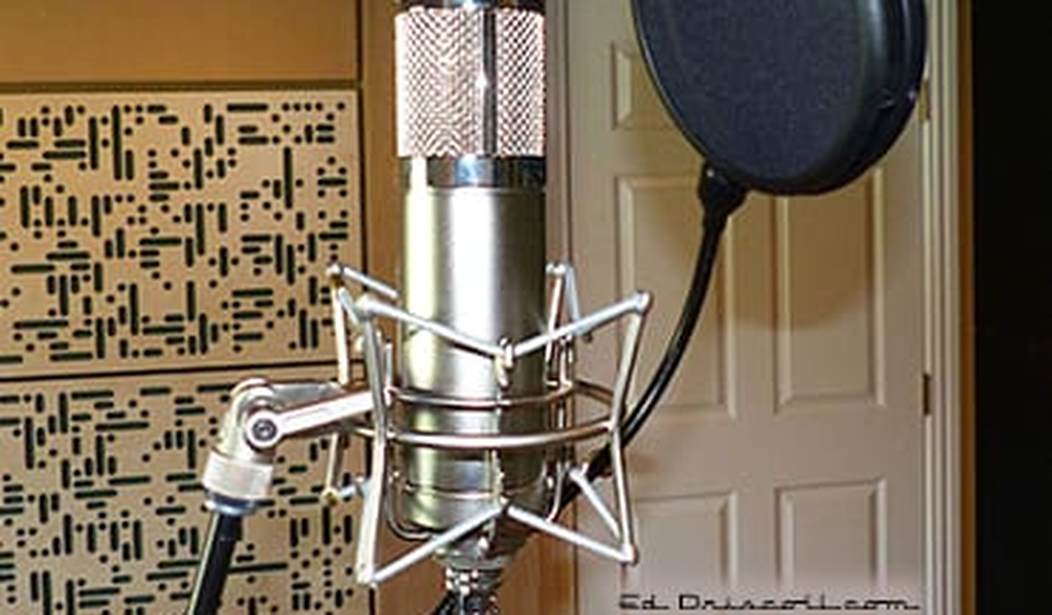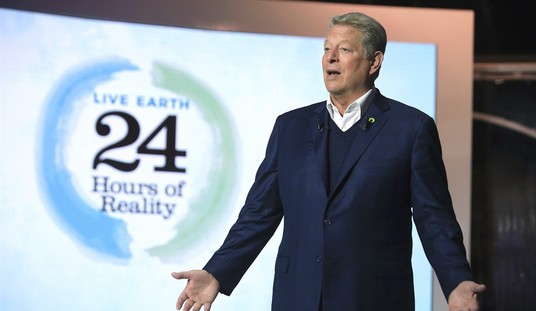Flip through any music store catalog (whether online or on dead tree), and you’ll see a bewildering, ever-expanding lineup of microphone types and styles. But once you begin to read articles and books on engineers and producers working in professional studios, things begin to narrow down considerably. There are a handful of microphones that have been professional studio staples since the 1950s. And odds are, if they’ve been in use in recording studios since the days of Elvis, Sinatra, and the Beatles, they should be good for many years of service in your project studio as well.
One of the most beloved microphones is the Neumann/Telefunken U47, which debuted in 1949, and quickly became a studio classic. The microphone was created by Neumann, who have been producing microphones in Germany since 1928, but during the 1950s, was distributed in America by Telefunken, which is why Sinatra always referred to his beloved U47 as his “Telly.” As Sound on Sound magazine noted, after World War II, “Telefunken were appointed to distribute the microphones worldwide, with the Telefunken logo in place of the Neumann badge. It may seem an odd arrangement, but actually it was a smart move, as it allowed Neumann to avoid paying royalties to Telefunken over patents in vacuum-tube technology.” (The VF14 vacuum tube that was the core of the U47 for its first several years of production was a Telefunken design.)
It Looks Just Like a Telefunken U47…
Any mic that was used by both Frank Sinatra and the Beatles (among plenty of other veteran artists) and more infamously, name-checked by Frank Zappa on his Joe’s Garage album, must have something going for it. In his 1979 autobiography All You Need is Ears, Beatles producer George Martin described the large diaphragm, vacuum tube powered U47 as his favorite microphone.
The U47 features a distinctive boost in its treble frequencies, which allows vocals to cut through a mix. This exaggerated high-end also made the microphones desirable during the days of analog recording, since high-end on analog tape often degraded over repeated playbacks and bouncing of tracks. (Just ask the producers of Fleetwood Mac’s Rumours album.)
However, Neumann discontinued the tube-based U47 in 1965, replacing it with a transistorized version called the FET U47. This mic never became the vocal legend that the original tube-based U47 has long been, but its ability to handle large sound levels saw it used frequently as a high-quality kick drum mic by many engineers. Instead, Neumann’s transistorized U87 microphone became the go-to vocal mic for many recording studios.
But demand for the original U47 design never ceased. Since being discontinued, these microphones have gone for increasingly high amounts of money, and may need frequent and possibly expensive servicing based on their age. at the time of this article, a quick search on eBay shows them selling starting at approximately over $7,000 — and even going for double than that. In 2001, a Boston-based company purchased the rights to the original Telefunken brand name; their reissued version of the U47 streets for $8495, though they also make a project studio version called the AK-47 (get it?) that streets for $1895.
Fortunately for project studio owners, in the past 15 years or so, the ability to source high-quality vacuum tubes and affordable Chinese labor has seen a resurgence in clones of classic studio mics. John Peluso is a veteran microphone designer and repairer of vintage tube mics, whose ever-expanding collection of boutique microphones feature parts built in China, with final assembly at his US facilities in the Blue Ridge Mountains of Virginia. One of his most popular microphones is the 2247 model — two guesses as to what the 47 portion of the model number is based on. As Peluso told Tape Op magazine in 2013, “We style our microphones after the classics, but we use our own engineering to replicate the sound. I don’t want to get into a pissing match with Neumann or AKG, so we change some things. We do the physics and figure out what we have to change to get the same resonances and sounds.”
Perhaps somewhat confusingly, Peluso Microphone Lab’s 2247 microphone is available in three different models. As Sound on Sound noted in their 2007 review, there is a “a basic model and two variations, the Standard Edition (SE) model and the Limited Edition (LE):”
The LE seems to be about as close a copy of the original as it is possible to get, as it is fitted with a German ‘Stahlröhren’ Telefunken ‘Steel Tube’ VF14-equivalent valve, whereas the SE model uses an American Steel Tube equivalent, the 5693/6SJ7. While the former is, arguably, more ‘authentic’, it is noisier, and the latter uses a more easily available valve and is quieter. Both are metal-cased valves, rather than the more familiar glass-tubed designs. The third version of the mic is based on a modification of the original U47 design (introduced by the German radio broadcasters in the 1970s), in which the original VF14 pentode was apparently replaced with a glass triode valve, and the noise-floor improved as a result. This version of the 2247 apparently uses the 6072A dual-triode valve, which endows it with a self-noise figure of 12dBA — that’s 3dB less than the original U47.
Another variation on the original theme is that only two polar patterns were provided on the U47: omni and cardioid. Each of the Peluso 2247 versions offers nine different polar patterns, controlled by a rotary switch on the power supply, ranging from omni, through cardioid and on to figure of eight. Other than those small differences, the 2247 looks the part, and is very well presented.
I chose the Peluso 2247SE to be the primary vocal mic in my home music studio. The 2247 is a somewhat aggressive sounding mic on its own, but plugged into a similarly tube-based pre-amp and compressor, can deliver the fat larger-than-life midrange and extended high-end that made its inspiration a classic.
As with the original U47, the transformer for the 2247 looks a bit like an old lunchbox, and in addition to its on/off switch, has controls to adjust the mic’s polar patterns from cardioid to omnidirectional to figure-of-8, and points in between those settings. In this sense, it’s more flexible than the original U47, which could only switch between cardioid and omni, and its much rarer sister mic, the U48, which allowed for switching between cardioid and figure-of-8. (Both types of mics were used extensively during the Beatles’ heyday at Abbey Road; some sources claim that Abbey Road sent some of their U47s back to Neumann to modified into U-48s.)
The 2247, its shock mount, its power supply and interlinking cable are packaged in a handsome and robust Peluso-branded silver steel flight case, with the mic itself inside a felt-lined wooden box. A Peluso-branded felt cloth bag is included to be placed over the microphone, to keep dust away while not in use during lengthy sessions.
One problem I ran into with my 2247SE is that it shipped with the elastic shockmount that Peluso uses with its P-87 mic (based on the U47’s transistor-based successor in the Neumann line, the U87). Its large tightening mechanism made it difficult to lock down without extra tools, and it only took a few sessions before I stripped the threads. However, contacting Peluso, their repair department quickly swapped it with the correct shockmount.
Never Break the (Vocal) Chain
Unless I’m experimenting, I normally plug my 2247SE into Chandler Limited’s REDD.47 preamp (REDD is short for “Recording Engineering Development Department,” EMI’s “skunk works” lab for in-house studio equiment). Chandler’s REDD.47 is an Abbey Road-approved clone of the pre-amp that was in the desk of the control room for Abbey Road’s Studio 2, from the early 1960s through 1968, and can be heard on numerous Beatles recordings. On my desk, the REDD.47 is typically patched into the Warm Audio WA-2A, which is based on the classic LA-2A tube-based optical compressor that was in many pro studios during the 1960s and ’70s.

Chandler Limited Redd.47 pre-amp at left; Warm Audio’s WA-2A compressor to its right.
Those three vacuum tubes combine to create a warm punchy sound and a beautiful vocal tone. And even when the occasional bit of exuberant singing scorches the headroom of the pre-amp and compressor, as Michael McDonald of the Doobie Brothers told veteran engineer-producer-recording artist Alan Parsons in his book, The Art & Science of Sound Recording:
On so many of the great vocals on the old R&B records, a lot of what you’re hearing was that little bit of distortion hitting the compressor. Some of those great Ray Charles screams and James Brown screams, it was kind of like it was just starting to mess up the compressor. And I always thought it was that great tone in their voice, but…so much of it, it all goes so hand in hand, and the [vocal] chain is so much more important to me now.
While the 2247 is a great sounding vocal mic, particularly when connected to the right vocal chain, it can’t overcome a bad-sounding room. To borrow a passage from my studio construction article from back in March, as David Stewart of music retailer Sweetwater.com noted when he interviewed Mitch Gallagher in his home studio construction video, “Look, I’m VP of sales at Sweetwater. I would love to sell everybody these really expensive great microphones. And they are great, and they do sound good. And they’re going to pick up your crappy room really well, and reproduce all that nastiness really well. So boy, I just can’t say enough how important it is to tackle those acoustic issues right away.”
At an absolute bare minimum, you’ll want a few duvets and something like the Reflexion portable vocal booth to tamp down standing waves and boxiness in your room before using a mic such as this. And you’d be much better off to spend money on your project studios acoustics first, instead of thinking that an expensive microphone is the cure-all to your problems.
But if your room is up to snuff, this is an excellent vocal mic, at a third or less than the current cost of an original. It won’t make you sound like the Fab Four or Sinatra — you or the artists you record have got to supply the talent for what goes into the front of the mic! — but it could be a powerful first step to making your vocals sound very good indeed.










Join the conversation as a VIP Member